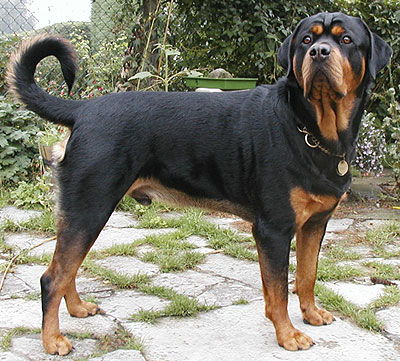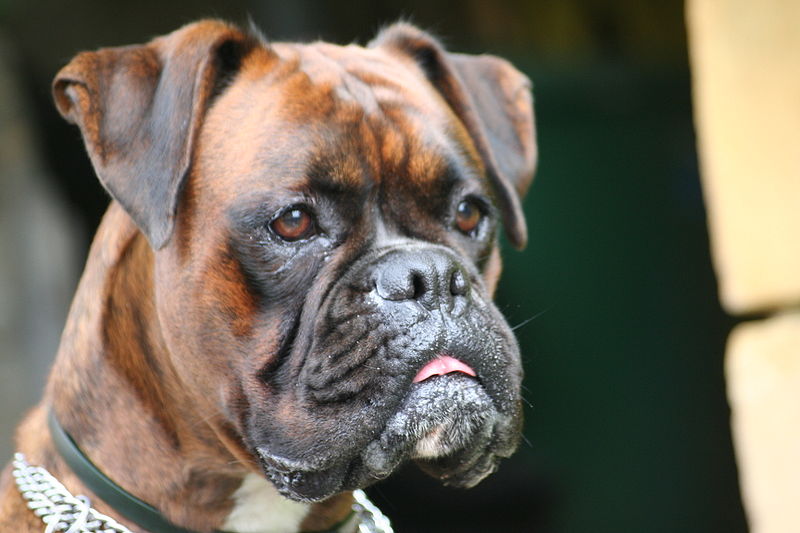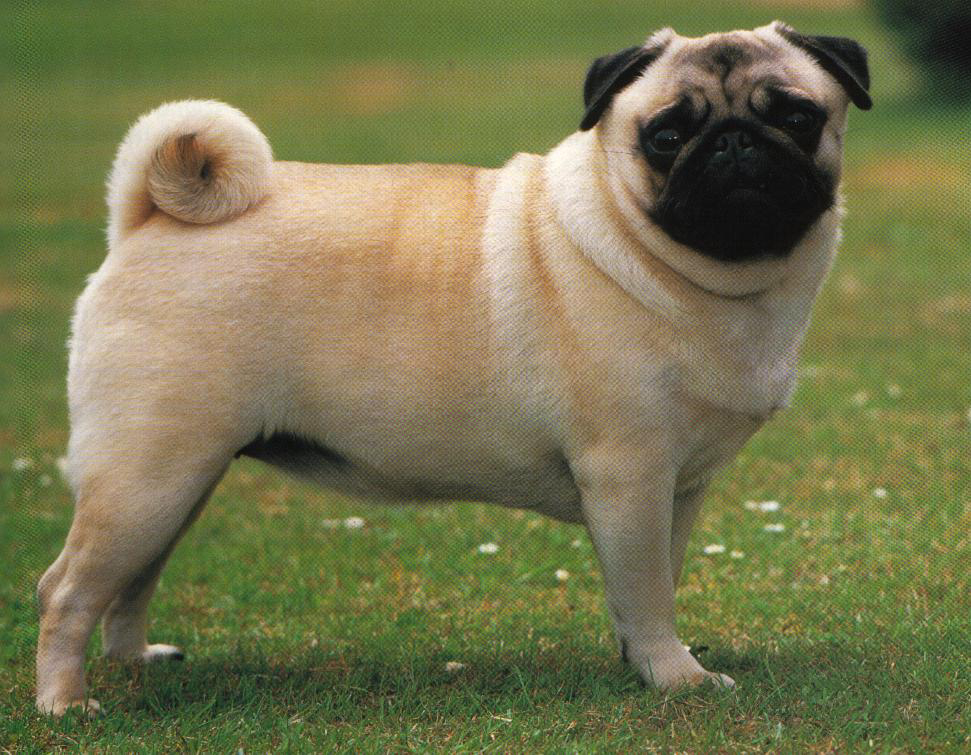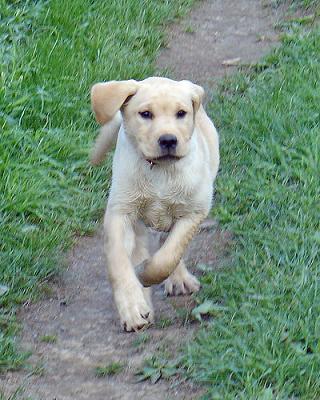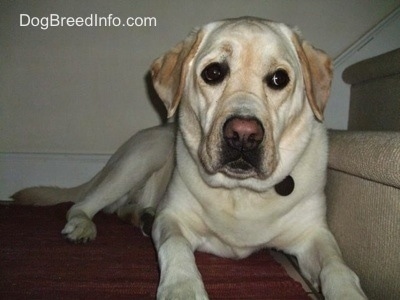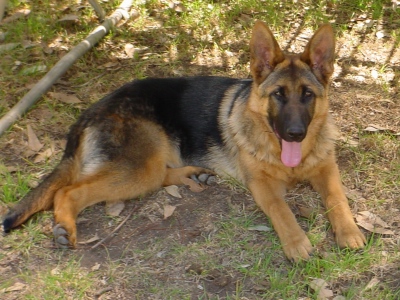
The German Shepherd Dog is well proportioned and very strong. The GSD has a sturdy, muscular, slightly elongated body with a light, solid bone structure. The head should be in proportion to its body, and the forehead a little rounded. The nose is most often black however, blue or liver still do sometimes occur, but is considered a fault and can not be shown. The teeth meet in a strong scissors bite. The dark eyes are almond-shaped, and never protruding. The ears are wide at the base, pointed, upright, and turned forward. The ears of puppies under six months may droop slightly. The bushy tail reaches almost to its hocks and hangs down when the dog is at rest. The front legs and shoulders are muscular and the thighs are thick and sturdy. The round feet have very hard soles. There are three varieties of the German Shepherd: rough-coated, long rough-coated, and the long-haired. The coat most often comes in black with tan, sable or all black, but also can come in blue, liver and white, but those colors are considered a fault according to most standards. White is not an acceptable color for the German Shepherd, however they are now being recognized as a separate breed, called the American White Shepherd. A piebald color has also occured in a single GSD bloodline which are now being called Panda Shepherds. A Panda is 35% white, the remainder of color is black and tan, and has no white German Shepherds in its ancestry.
Height: Dogs 24-26 inches (60-65cm.) Females 22-24 inches (55-60cm.)
Weight: 77-85 pounds (35-40kg.)
Living Conditions
The German Shepherd will do okay in an apartment if sufficiently exercised. They are relatively inactive indoors and do best with at least a large yard.
Exercise
German Shepherd Dogs love strenuous activity, preferably combined with training of some kind, for these dogs are very intelligent and crave a good challenge. They need to be taken on a daily, brisk, long walk, jog or run alongside you when you bicycle. While out on the walk the dog must be made to heel beside or behind the person holding the lead, as in a dog's mind the leader leads the way, and that leader needs to be the human. Most shepherds love to play ball or Frisbee. Ten to fifteen minutes of fetching along with daily pack walks will tire your dog out quite nicely as well as give him a sense of purpose. Whether it is ball chasing, frisbee catching, obedience training, participation in a canine playgroup or just taking long walks/jogs, you must be willing to provide some form of daily, constructive exercise. The daily exercise must always include daily walks/jogs to satisfy the dogs migration instinct. If under-exercised and or mentally challenged, this breed can become restless and destructive. Does best with a job to do.
Life Expectancy
Around 13 years.







